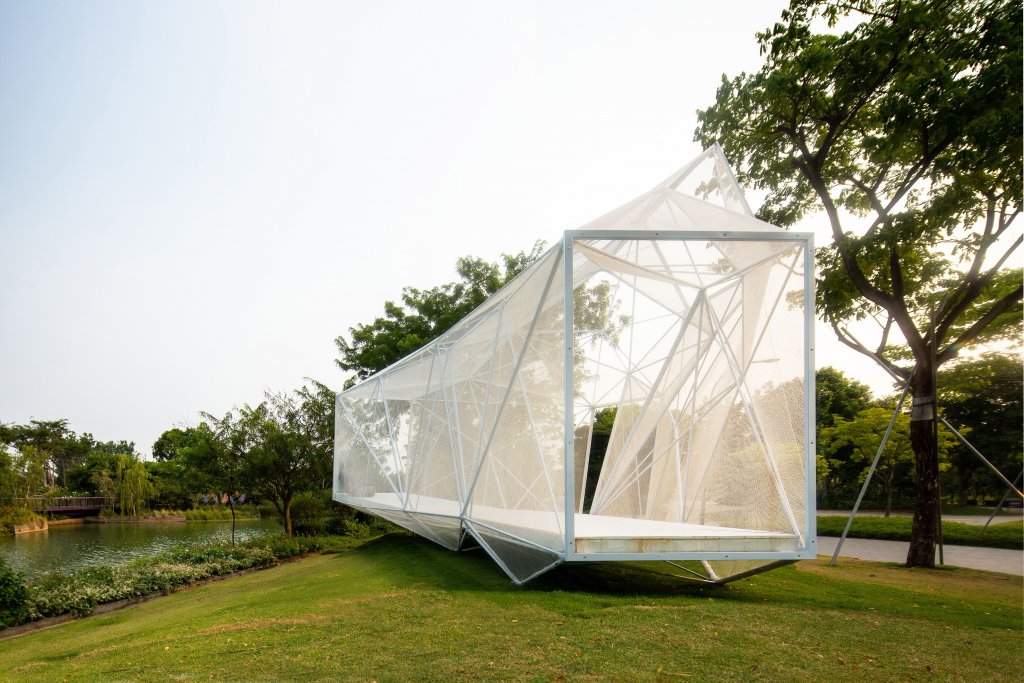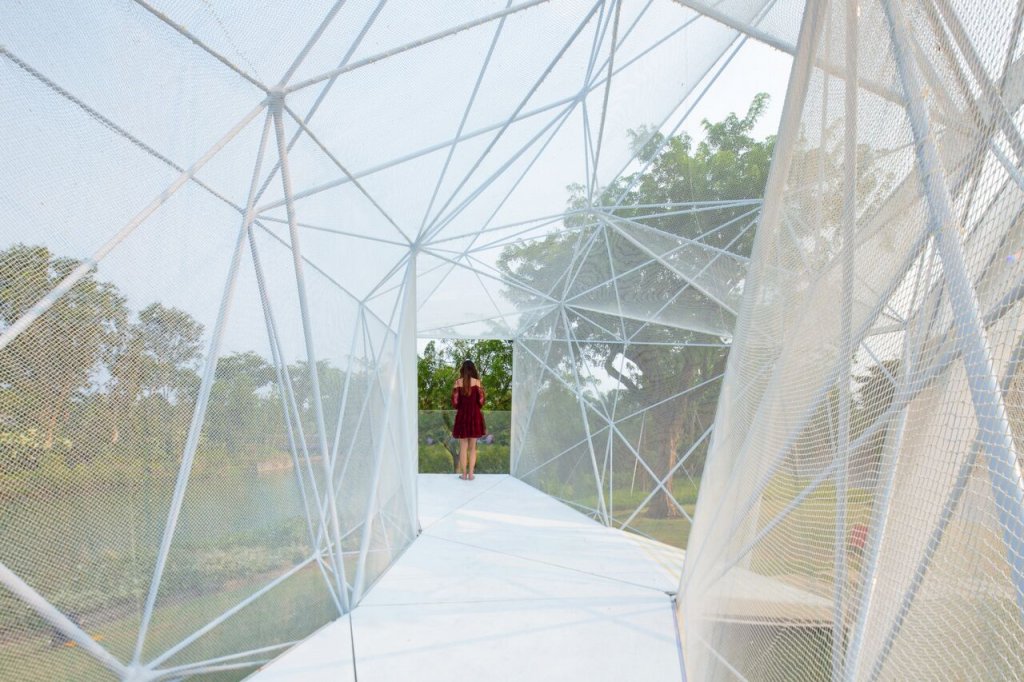Architecture Intelligence Research Lab at SUTD Installs 3D Printed Pavilion for Mid-Autumn Festival
 The first fully functional 3D printed structure was designed and built in Singapore recently by a research group under the direction of architects and professors at Singapore University of Technology and Design (SUTD). The research group, Architecture Intelligence Research Lab (AirLab), at SUTD, created the structure—called AirMesh—and installed it for use as a pavilion at Gardens by the Bay. This site also coincides with the Mid-Autumn Festival 2019.
The first fully functional 3D printed structure was designed and built in Singapore recently by a research group under the direction of architects and professors at Singapore University of Technology and Design (SUTD). The research group, Architecture Intelligence Research Lab (AirLab), at SUTD, created the structure—called AirMesh—and installed it for use as a pavilion at Gardens by the Bay. This site also coincides with the Mid-Autumn Festival 2019.
Airmesh has been in the works for five years now at SUTD with Professors Carlos Bañon and Felix Raspall. Employing the most classic benefits of 3D printing, the group’s goal was to create products with ‘extreme lightness’ as well as making a structure optimized for high performance. The team worked together from a common point of inspiration: a 3D neural network concept that is not only interconnected but ‘extremely redundant.’
The design makes up the world’s first space frame, following Eurocode regulations, approved by Singapore Building Construction Authority (BCA) for a short time of occupation. The ‘digitally-crafted belvedere’ is installed and has been open to visitors since August 30, 2019.
“As the first of its kind, it fosters Singapore’s design and innovation edge. AirMesh structural prowess pushes the limit of slenderness and therefore aims to inspire dare and curiosity in users,” said Bañon, Lead Designer.
The designers were able to create the lightweight structure due to the tetrahedral configuration, bearing the load of 200 linear elements coming together in 54 parametric bespoke 3D printed nodes. Described also as an ‘ethereal pavilion,’ the structure is situated on a green slope, attached in eleven points. Its convex hull is meant to connect visitors to the following four points as the breeze and sunshine flow through:
- The Dragonfly River
- The SG50 Dome
- Entrance path
- Marina Bay Sands rooftop
Two layers of white netting adorn the structure, along with LED lights illuminating it at night.
“As the first of its kind, it fosters Singapore’s design and innovation edge. Airmesh structural prowess pushes the limit of slenderness and therefore aims to inspire dare and curiosity in users,” said Bañon.
The space frames designed here required a new level of freedom, innovative tools, and progressive technology. Assembly took two days, with manpower requiring only five as they assembled the whole pavilion, which weighs 700kg.
“Over five years, we have developed a system whereby any form can be conceptualized, fabricated and assembled by means of computer code created in our lab. It unlocks immense possibilities for future architectural designs like transportation hubs, large span roofs, and even skyscrapers,” said Anna Toh Hui, Lead Researcher, Airlab SUTD.
The research team consisted of Anna Toh Hui Ping, head researcher, working with David Rosen, Vahid Hassani, Jenn Chong, Sourabh Maheshwary, Sihan Wang, Liu Chi, Huang Kunsheng, Luo Qihuan, Aurelia Chan, and Cheong Yilei.
“With this new milestone, SUTD is proud to put Singapore at the forefront of innovation in high performance 3D printing in architecture and structural design,” said Bañon.
One of the most fascinating aspects of 3D printing today is the potential offered in architecture, whether users are creating prototypes for walls and arches, homes of the future, or even creating interactive living structures. What do you think of this news? Let us know your thoughts! Join the discussion of this and other 3D printing topics at 3DPrintBoard.com.
[Source / Images: Singapore University of Technology & Design]Subscribe to Our Email Newsletter
Stay up-to-date on all the latest news from the 3D printing industry and receive information and offers from third party vendors.
You May Also Like
3D Printing News Briefs, May 25, 2024: 3D Printed Medical Models, Sensors, Engines, & More
We’re starting with research in today’s 3D Printing News Briefs, first about filament diameter-adjustable 3D printing and then about 3D printed sensors. Then, we’re moving on to personalized 3D printed...
Meet the New XJet: New CEO and CBO Discuss New 3D Printing Strategy
When it emerged on the market in 2016, Israel’s XJet was one of the most promising startups in the additive manufacturing (AM) industry. Promising a user-friendly method for producing extremely...
XJet’s Metal 3D Printing Enters Fashion & Luxury Sector via XOLUTIONS
XJet, based in Israel, develops and produces 3D printing solutions for ceramics and metals, and its systems have been used in a variety of applications, including medical and dental, machinery,...
3D Printing Webinar and Event Roundup: August 20, 2023
In this week’s roundup of 3D printing webinars and events, Stratasys continues its North American tour, and 3D Systems starts its Additive Insights Roadshow. There’s an Automation Expo in Mumbai,...







































